Perched dramatically on the rugged cliffs of County Antrim, Northern Ireland, Dunluce Castle is a striking ruin that embodies the tumultuous history of the region. With its origins tracing back to the 13th century, the castle’s crumbled walls and precarious position overlooking the North Atlantic Ocean captivate visitors and historians alike. Originally built by Richard Óg de Burgh, 2nd Earl of Ulster, the castle later became the stronghold of the influential MacDonnell clan, marking it as a center of power and conflict during the medieval and Renaissance periods.
Dunluce Castle’s scenic yet strategic location on a basalt outcrop, accessible only by a bridge connecting it to the mainland, has made it a focal point of military history and legend. Its historical significance extends beyond mere military might, reflecting the cultural and social dynamics of its time. Over the centuries, Dunluce Castle has witnessed countless battles, hosted Spanish Armada shipwrecks, and inspired numerous myths and artistic works.
Contents
Early History and Construction
Origins of the Site
Dunluce Castle’s storied past begins long before the stone walls were erected, with its origins deeply rooted in early medieval history. The site itself, located on a dramatic basalt outcrop, was ideally situated for defensive purposes, offering panoramic views over the North Atlantic and making it extremely difficult for potential invaders to approach unnoticed. Archaeological evidence suggests that the area was significant for early Christians and Vikings, who were likely drawn to its strategic position. An early Irish fort, dating back to perhaps as early as the first millennium, originally occupied the site, setting the stage for the later construction of the castle.
Construction by Richard Óg de Burgh
The first substantial structure, the castle we begin to recognize today, was built in the 13th century by Richard Óg de Burgh, the 2nd Earl of Ulster. This initial construction aimed to solidify English influence in the area and served as a formidable statement of power. De Burgh’s castle was primarily a military fortress, characterized by its robust defensive features which were typical of Norman architecture. The design included formidable walls and strategic positioning to leverage the natural defensive advantages provided by the cliffside location.
Transition to the McQuillan Family
By the 16th century, the castle had passed into the hands of the McQuillan family, who were known as the Lords of the Route. Under their tenure, significant architectural enhancements were made, adapting the castle to meet the changing demands of the time. The McQuillans, originally mercenaries from Scotland, added two large drum towers on the eastern side of the castle, enhancing its fortifications and residential areas as they settled into their role as local lords.
During this period, Dunluce Castle not only served as a military bastion but also as a residential palace, reflecting the McQuillan family’s growing social and political stature. These additions and modifications transformed it from a purely defensive stronghold into a more complex structure capable of supporting a prominent family’s needs, including spaces for administration and domestic living.
The architectural changes made by the McQuillans set the stage for the next chapter in Dunluce Castle’s history, as it would soon pass into the hands of the ambitious MacDonnell clan. These transitions marked the beginning of a new era of conflict and conquest, embedding the castle even deeper into the fabric of Northern Ireland’s turbulent history.
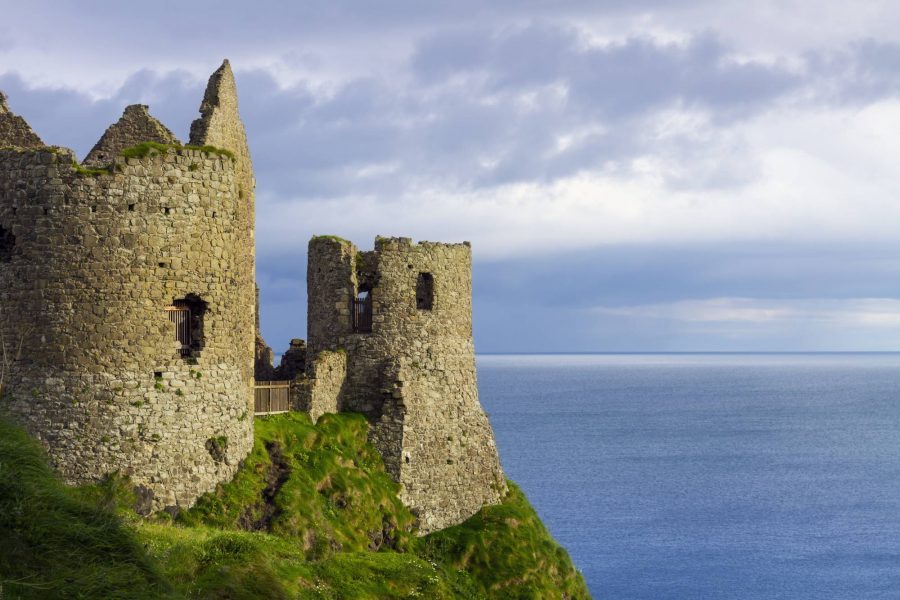
The MacDonnell Era
The Takeover by the MacDonnell Clan
In the mid-16th century, the power dynamics around Dunluce Castle shifted dramatically when the MacDonnell clan, a family of Scottish origin, began to assert their influence over the region. The MacDonnells, led by the formidable chieftain Sorley Boy MacDonnell, gradually overpowered the McQuillan family through a series of conflicts and strategic alliances. This transition marked a significant turning point for Dunluce Castle, as it came under the control of a clan that would leave a lasting impact on its architecture and legacy.
Sorley Boy MacDonnell and His Enhancements
Sorley Boy MacDonnell, a chief known for his military prowess and leadership skills, was instrumental in transforming Dunluce Castle into a stronghold that reflected the ambitions and power of his clan. Recognizing the castle’s strategic importance, he embarked on an extensive program of fortification and expansion. Sorley Boy strengthened the existing structures, added new fortifications, and incorporated elements of Scottish baronial architecture, which gave the castle its distinctive appearance.
A particularly dramatic chapter in the history of Dunluce Castle involved the wreckage of the Girona, a ship from the ill-fated Spanish Armada that was wrecked off the nearby coast in 1588. Sorley Boy MacDonnell salvaged cannons and other valuable artifacts from the Girona. These cannons were subsequently installed in the castle’s gatehouses, significantly enhancing its defensive capabilities. This not only demonstrated the resourcefulness of the MacDonnells but also added a layer of historical intrigue and international connection to the castle’s legacy.
Strategic and Residential Improvements
Under the MacDonnells, Dunluce Castle not only served as a military fortress but also evolved into a residential palace that accommodated the needs of a leading noble family. The MacDonnells expanded the living quarters, improving the comfort and functionality of the castle as a family residence. They added new buildings within the castle complex, including a great hall for gatherings and banquets, private chambers for the family, and better accommodations for guests and retainers.
The outer ward of the castle was developed during this period, featuring stables, kitchens, and servant quarters, which supported the daily operations of a bustling noble household. The MacDonnells also landscaped the surrounding areas to create gardens and other recreational spaces, emphasizing their status and enhancing the castle’s aesthetic appeal.
17th Century Developments
Randal MacDonnell’s Contributions
The 17th century marked a period of significant transformation for Dunluce Castle under the stewardship of Randal MacDonnell, who became the 1st Earl of Antrim. His contributions extended beyond mere architectural enhancements, as he sought to cement his family’s status and influence in the region. One of Randal’s most ambitious projects was the establishment of a planned town adjacent to the castle. Built around 1608, this town was designed using a grid system, a revolutionary concept at the time, particularly in Ireland. The town included advanced features such as indoor toilets and cobbled streets, reflecting Randal’s vision of a modern settlement that could support both the economic and social aspirations of his estate.
Dunluce Castle During the Plantation of Ulster
During the Plantation of Ulster, a significant colonization project undertaken by the English government to control and settle Ulster with loyal Protestant subjects, Dunluce Castle and its surrounding estates played a critical role. Despite the broader political and religious conflicts of the period, Randal MacDonnell managed to maintain a degree of autonomy. He navigated these turbulent times by fostering a community around the castle that included a mix of native Irish and Scottish settlers, thus creating a unique societal microcosm that was somewhat insulated from the greater upheavals of the Plantation period.
Myths and Legends
The Tale of Maeve Roe
One of the most enduring legends associated with Dunluce Castle is the tragic story of Maeve Roe, the daughter of Lord McQuillan, the castle’s lord before the MacDonnells took possession. As the tale goes, Maeve was locked in the castle’s northeast tower as punishment for refusing to marry a suitor chosen by her father. Desperate to be with her true love, Reginald O’Cahan, Maeve and he planned a daring escape by boat. However, their attempt was thwarted by a violent storm, which dashed their boat against the rocks below the castle. According to local folklore, Maeve’s ghost still haunts the castle ruins, particularly the tower where she was imprisoned, her mournful cries heard above the roaring sea on stormy nights.
The Kitchen Collapse
Another popular legend recounts a harrowing night when a portion of the castle’s kitchen, situated perilously close to the cliff edge, supposedly collapsed into the sea during a storm. The story claims that only a young kitchen boy survived because he was sitting in the only corner that did not fall into the ocean. This dramatic event is said to have prompted the castle residents, particularly the lady of the castle, to abandon Dunluce, fearing further catastrophes. While this tale adds a romantic and ghostly allure to the castle’s history, it is more myth than fact, as the kitchen actually remains intact to this day. However, this legend remains a favorite among storytellers and visitors, enhancing the castle’s mystical charm.
Cultural Significance and Inspirations
Dunluce Castle’s evocative setting and mysterious ruins have made it a rich source of inspiration in literature and music. It is thought to be the inspiration behind Cair Paravel, the fictional castle in C.S. Lewis’s “Chronicles of Narnia.” Lewis, born in Belfast, was likely influenced by the castle’s romantic silhouette against the Northern Irish coastline.
In music, the castle’s influence extends to the orchestral tone poem “Dunluce” composed by Norman Hay in 1921. The eerie and majestic qualities of the castle have moved artists to capture its essence in various forms, contributing to its status as a symbol of cultural heritage and artistic muse.
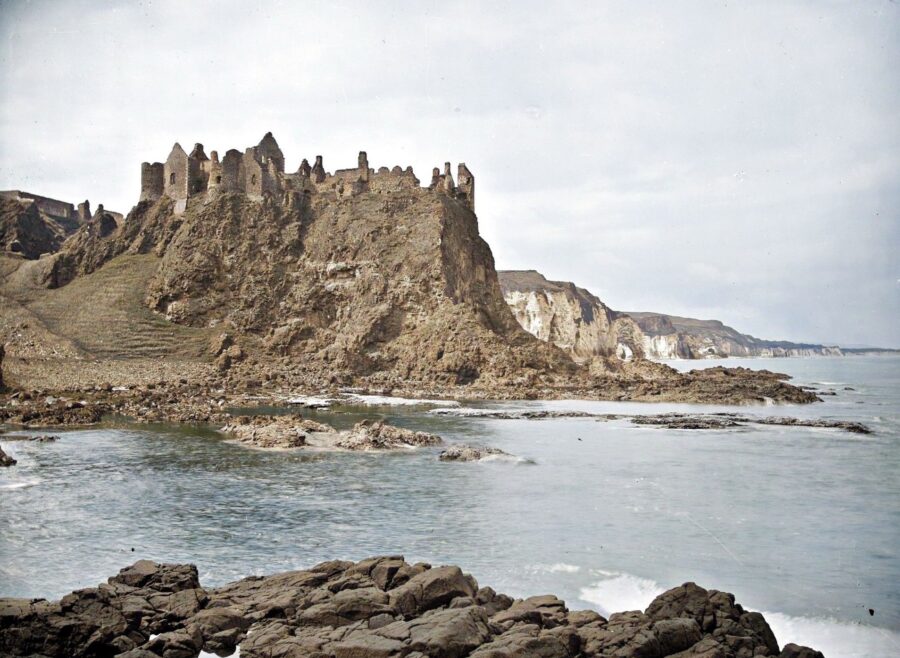
Decline and Ruin
Factors Leading to Decline
The decline of Dunluce Castle began in earnest following the Battle of the Boyne in 1690, a pivotal event in Irish history that saw the defeat of King James II by William III. This battle was part of a larger conflict known as the Williamite War in Ireland, which had significant religious and political implications for the country. The MacDonnells, who were staunch supporters of James II and the Jacobite cause, found themselves on the losing side, leading to a dramatic reversal of their fortunes.
The defeat had dire consequences for the MacDonnells’ standing in society and their financial stability. The loss of royal favor and the subsequent penal laws against Catholics severely restricted their ability to maintain their estates. Over time, the family’s dwindling resources made it increasingly difficult to uphold the grandeur of Dunluce Castle.
Abandonment and Scavenging
As the 18th century progressed, the MacDonnells gradually abandoned Dunluce Castle, moving to more manageable and less costly residences. The castle’s remote location and exposure to the harsh coastal weather hastened its physical deterioration. Without regular maintenance, the structure succumbed to the elements, leading to roof collapses and the crumbling of its walls.
The abandonment turned the castle into a convenient quarry for the local population. Building materials, particularly the hewn stones of its once grand edifices, were scavenged to construct or repair homes and other structures in the vicinity. This scavenging was not uncommon in rural Ireland, where old ruins often provided ready resources for building needs.
The systematic removal of materials from the castle not only accelerated its ruin but also erased much of the architectural detail and craftsmanship that had characterized the MacDonnell residency. By the 19th century, Dunluce Castle was largely a romantic ruin, its skeletal remains offering only hints of its former grandeur and significance.
Archaeological Findings and Preservation Efforts
Discoveries from Ongoing Archaeological Excavations
Recent archaeological excavations at Dunluce Castle have unearthed a wealth of information, shedding new light on the daily life and structure of the castle throughout its history. These excavations have particularly focused on the “lost town” of Dunluce, which was planned by Randal MacDonnell in the early 17th century and thought to have been one of the most sophisticated settlements of its time in Ireland.
Findings include well-preserved remains of stone merchant houses and cobbled streets laid out in a grid pattern, which speak to a well-organized urban planning approach uncommon in that era. Artifacts such as pottery, coins, and personal items have been discovered, illustrating the blend of cultural influences and the relative affluence of the town’s inhabitants. Particularly notable are remnants of indoor plumbing facilities, which attest to the town’s advanced living conditions before it was razed during the Irish Rebellion of 1641.
Current Preservation Efforts by the Northern Ireland Environment Agency
The Northern Ireland Environment Agency has taken an active role in preserving Dunluce Castle, recognizing its cultural, historical, and educational importance. Conservation efforts are focused on stabilizing the existing structures to prevent further decay and making the site safe and accessible for visitors. This includes fortifying walls, managing vegetation growth that can cause structural damage, and restoring parts of the castle where possible to preserve its historical integrity.
Educational programs and interpretive signs are installed around the site to educate visitors about the castle’s history, architecture, and the ongoing archaeological efforts. These initiatives help in fostering a deeper appreciation and understanding of Dunluce Castle’s historical significance.
The Castle’s Status as a Tourist Attraction and Its Cultural Implications
Dunluce Castle is a major tourist attraction in Northern Ireland, drawing visitors from around the globe who are captivated by its stunning ruins and dramatic cliff-top setting. The castle not only offers a glimpse into the medieval and early modern periods of Irish history but also serves as a cultural icon in the collective memory and identity of Northern Ireland.
The castle’s allure is enhanced by its association with popular culture and folklore, making it a place of pilgrimage for those interested in the legends of Maeve Roe or fans of literary and cinematic works that reference Dunluce. Its depiction on album covers, in films, and in literature has cemented its status as a symbol of mystical and historical intrigue.
The impact of tourism driven by Dunluce Castle’s appeal has significant cultural and economic implications for the local community. It helps promote cultural heritage tourism, which in turn supports local economies by creating jobs and fostering a sense of pride in preserving and sharing Northern Ireland’s rich history.
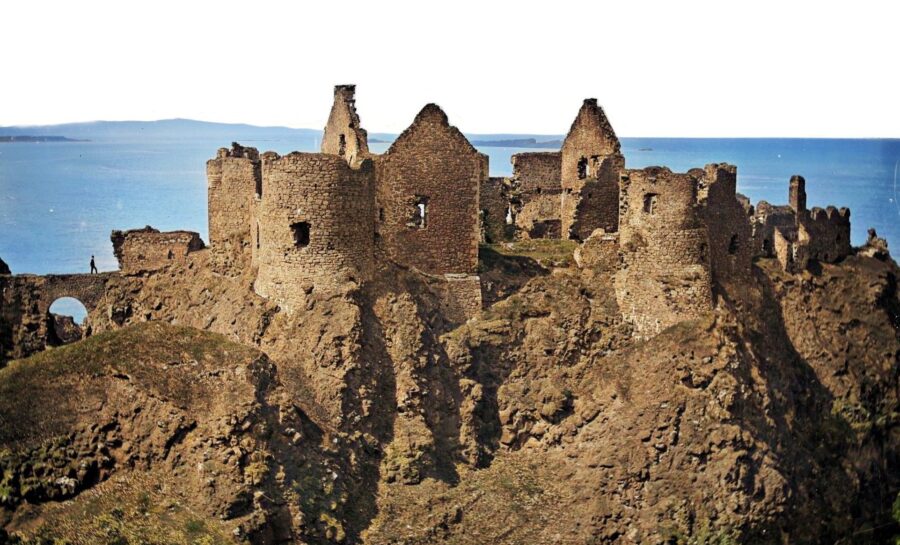
In Popular Culture
References and Appearances in Films, Music, and Literature
Dunluce Castle’s enigmatic ruins and dramatic coastal setting have made it a magnet for creative representation across various media. Its silhouette has graced the artwork of the 1973 Led Zeppelin album “Houses of the Holy,” linking its image indelibly with the mystique of rock music. This iconic representation has not only cemented the castle’s place in rock history but has also introduced it to a global audience.
In literature, Dunluce Castle is thought to have inspired the fictional Cair Paravel, the majestic castle depicted in C.S. Lewis’s beloved “Chronicles of Narnia.” Lewis’s upbringing in Northern Ireland undoubtedly familiarized him with the castle’s commanding presence and its folklore, enriching his fantastical creations with a touch of local heritage.
The castle has also made its mark in film and television, contributing its haunting beauty to various productions. It was featured as a location in the 1971 film “Flight of the Doves” and has appeared in other visual works, enhancing its reputation as a picturesque, yet potent symbol of historical allure.
Impact on Public Perception and Tourism
The portrayal of Dunluce Castle in popular culture has significantly influenced public perception and increased tourism. Each mention or depiction in media serves as an invitation for potential visitors to explore the ruins themselves, offering them a chance to step into a scene from a favorite song, book, or movie. This blending of history and fantasy appeals to a wide audience — from history enthusiasts and literary aficionados to music fans and general tourists.
For many, visiting Dunluce Castle is akin to walking onto a set of a historical drama or a page from a fantasy novel. This allure is magnified by the stories and legends surrounding the castle, such as those of Maeve Roe, adding layers of mystique and narrative depth that engage visitors’ imaginations.
The impact on tourism can be seen in the increasing visitor numbers, especially during the tourist season, when guided tours and informational displays bring the castle’s past to life. The economic benefits for the local community are palpable, with tourism supporting local businesses and promoting cultural heritage as a key asset for Northern Ireland.
Moreover, the cultural representations of Dunluce Castle have helped shape a collective image of Northern Ireland as a land of history, mystery, and dramatic landscapes, enhancing its profile on the world stage. As such, Dunluce Castle not only serves as a historical monument but also as a beacon of cultural and economic significance, drawing connections between the past and the present, the real and the imagined.
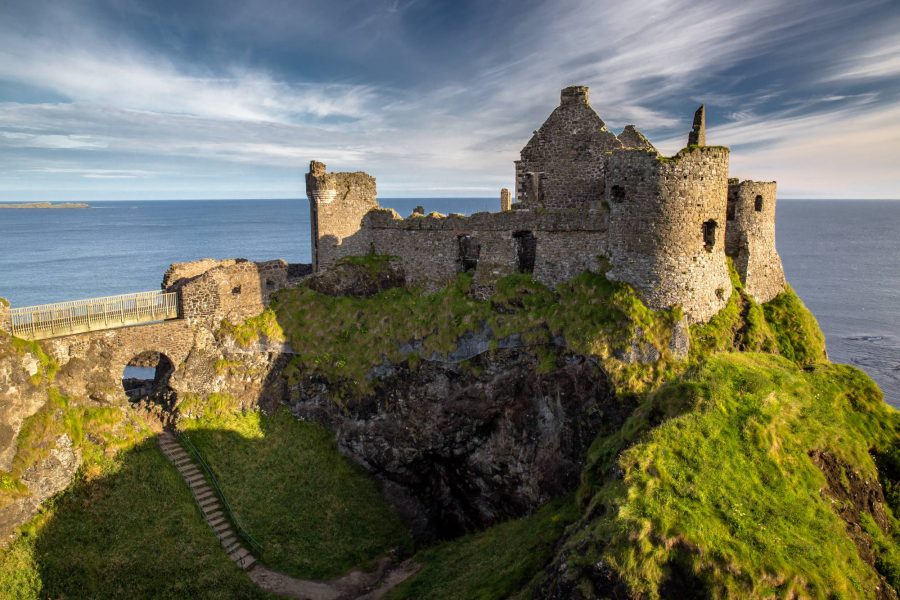


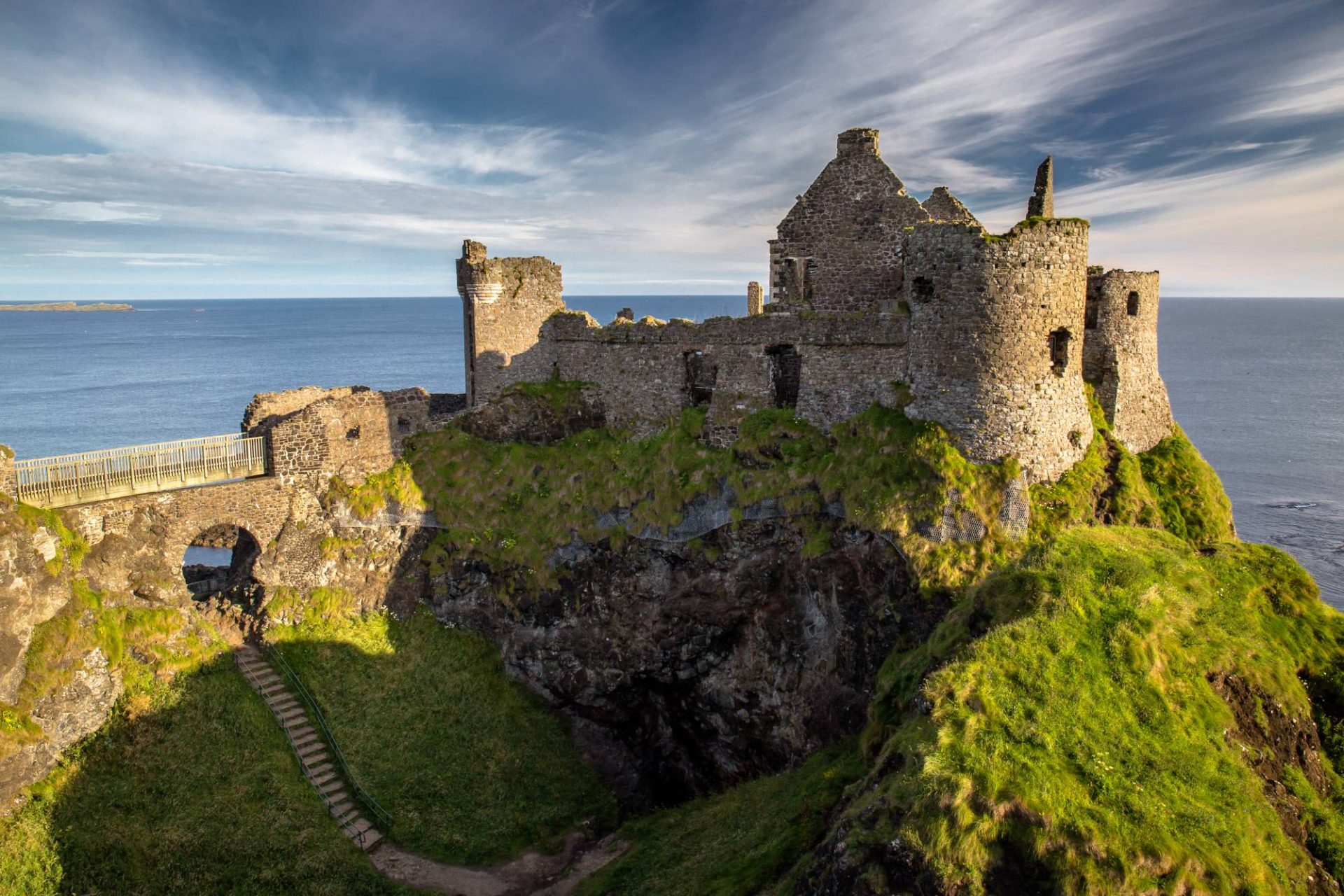
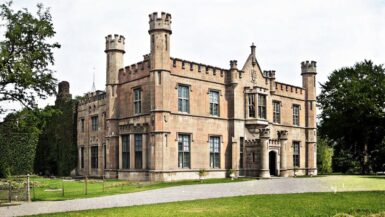
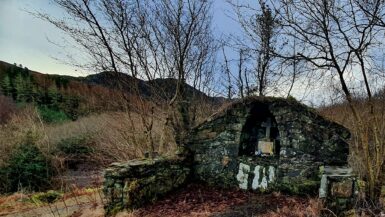
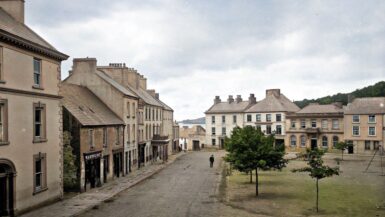
Leave a reply